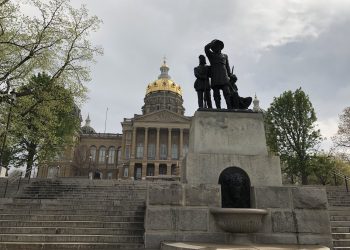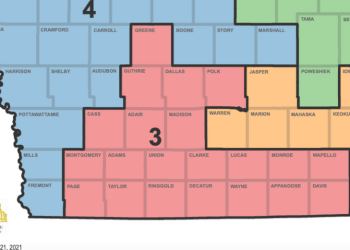Iowa’s historic tax reforms this year focused on lowering the income tax rates paid by Iowans and the companies that employ them. The next step needs to be changing who is – and is not – paying those taxes. If Governor Kim Reynolds and the legislature want to truly position Iowa for the future, it’s time to take on the state’s addiction to special tax breaks.
The 2022 reforms couldn’t have come at a better time to help the state compete for people and jobs. The planned reduction of individual tax rates to a 3.9 percent flat rate and corporate taxes to 5.5 percent over the next few years will leave more money in Iowans’ pockets and let companies spend more on payroll and other productive uses.
Since 2018, Gov. Kim Reynolds and the Iowa Legislature have made tax reform a priority and they’ve made great progress – but they can’t stop now.
One reason Iowa’s income tax rates are so high is the fact that policymakers had used the tax code to enact legislation for purposes other than funding state government services. In other words, policy problems were addressed by creating new tax credits with dozens of new tax credit bills introduced each legislative session. Many are intended to promote socioeconomic purposes, such as the recent exemption from the sales tax feminine hygiene products and child and adult diapers. Therefore, wholesale tax credit reform is necessary, as each individual tax credit is fiercely defended by a special interest group.
However, when policymakers legislate through the tax code like this, it results in higher tax rates and added complexity that makes it harder for small businesses and average people to be sure they’re paying what they owe in taxes – and no more. The result is a massive collection of tax credits that weighs down the state budget every year. The estimated liability for tax credits in Iowa is $581.4 million for Fiscal Year 2022, with the largest corporate tax break being the Research and Activities Tax Credit ($67.6 million in FY 21).
To give that $581.4 million 2022 price tag some context, it’s $134 million more than the Iowa Department of Transportation spent on interstate highway maintenance and construction that year. Or, it could have covered the state’s roughly $550 million contribution toward operating the University of Iowa, Iowa State University and University of Northern Iowa. While supporters say that many of these tax breaks are necessary for “economic development,” even the site selection industry’s own research regularly finds that a state’s infrastructure and skilled workforce – freeways and universities, in other words – are far more important factors for businesses deciding where to locate than one-off tax credits could ever be.
Despite that, we saw during the debate over the 2022 tax reform measure just how hard it was to reform one single tax credit when Senate Majority Leader Jack Whitver and Senate Ways & Means Chair Senator Dan Dawson fought to include tax credits – specifically, the Research and Activities credit – in the overall reform plan. Reforming that credit helped make the numbers work for cutting the overall corporate tax rate, but the special interests behind a tax credit that primarily benefits big, politically powerful corporations made it an epic fight. Both Sen. Whitver and Sen. Dawson stuck to their guns and correctly argued that lowering income tax rates requires everything to be on the table, including tax credits.
The evidence is clear that tax credits do very little to change companies’ decisions about where to do business. That should be reason enough for a wholesale legislative power washing of the state tax code to eliminate decades of crusted-on tax credits, but if nothing else the legislature should continue the momentum of the state’s historic tax reforms by bringing greater transparency and reform to tax credits and strengthening its oversight of all existing tax credit programs. This should include putting real teeth into the Tax Expenditure Committee’s so-far ineffectual reviews.
Once the evidence is in, it will be time to start reforming or even eliminating credits that aren’t delivering real-world results. The more that Iowa’s elected leaders can do to eliminate tax credit carve-outs, the more they’ll be able to continue reducing the tax burden on everyone.
















